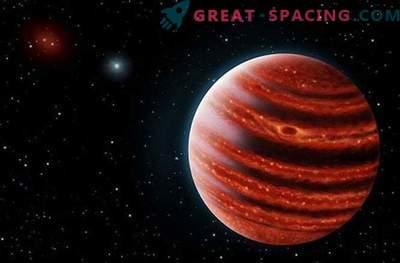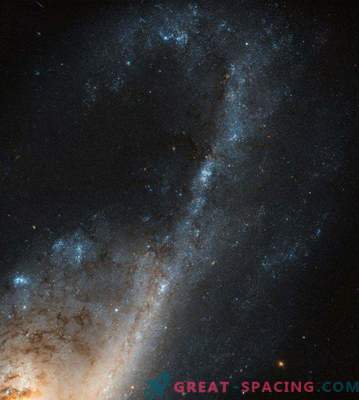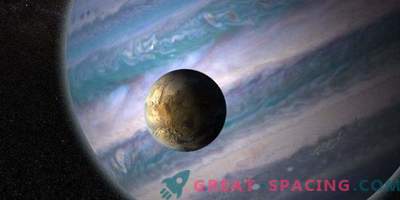
Despite the fact that in our solar system there are no gas planets with a thin atmosphere of helium, observations of the Spitzer space telescope show that on a galactic scale, such phenomena are not at all rare.
According to a scientist from NASA's Jet Propulsion Laboratory in Pasadena and the author of the corresponding article in the Astronomical Journal Renu Hu: “There are no planets of this type around our Sun, but it seems to us that such space bodies are common among other solar systems.”
During the search for exoplanets of a special class, also known as the “Warm Neptunes”, the team of Renu Hu came to the conclusion that the atmosphere of these worlds under the influence of stellar radiation could completely lose hydrogen, leaving heavier helium above the surface.
The size of such warm Neptunes does not exceed the dimensions of the eponymous “ice giant”. But unlike these exoplanets, the atmosphere of the blue star consists mainly of hydrogen. Neptune and Uranus are often called ice planets because of the large amount of icy substances, such as water, methane and ammonia, which are part of them. Due to its proximity to red-hot stars, the composition of the warm Neptune is radically different from the composition of the planets nearest to us. First of all, this is expressed by the absence of hydrogen in the atmosphere.
“Hydrogen is four times lighter than helium, and under the influence of a strong solar wind, it can slowly disappear from the planet’s atmosphere,” says Hu. “As a result of this process, which takes more than 10 billion years, the concentration in the helium atmosphere increases significantly.”
This discovery was the result of observing the object GJ 436b - warm Neptune 33 light years from Earth - with the help of the Spitzer telescope. While studying the radiation of the planet, it was discovered that there is practically no methane in its atmosphere.
Our Neptune contains a lot of methane, which absorbs the light of the red spectrum. This gives the planet a recognizable bright blue hue. On the GJ 436b, in turn, there is no methane, although carbon is in excess. Since methane (CH4) consists of carbon and hydrogen, its absence can be explained by the lack of one of the elements, in this case hydrogen.
Instead of contacting hydrogen, carbon reacts with oxygen. As a result, the atmosphere of the exoplanet is enriched with carbonate oxides - CO and CO2. This fact indicates the presence in the composition of the gas shell of such planets of a large amount of helium - the second most abundant element in the Universe. In support of this theory, the Spitzer telescope detected traces of the corresponding chemical compounds in the emission spectrum of GJ 436b. Warm Neptunes should look different from the ice giant of our system. They are more pale and gray, they do not have a drop of that azure beauty that is characteristic of Neptune.
Until now, researchers have not been able to detect direct evidence of the presence of helium in the atmosphere of exoplanets. Scientists have high hopes for the new NASA telescope “James Webb”. They hope to use it to search for other warm Neptunes to explore these strange bodies in more detail.
“Any planet that you can imagine can exist somewhere in the vast expanses of the Universe,” says Sara Seager, co-author of the article. “Planets are so different in size and mass that virtually any configuration satisfying the laws of physics and chemistry can be detected.”











































